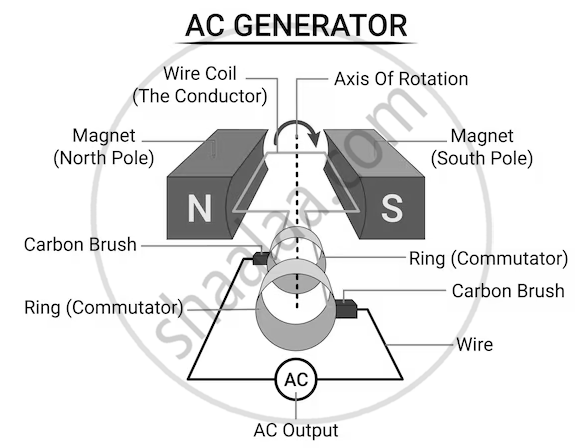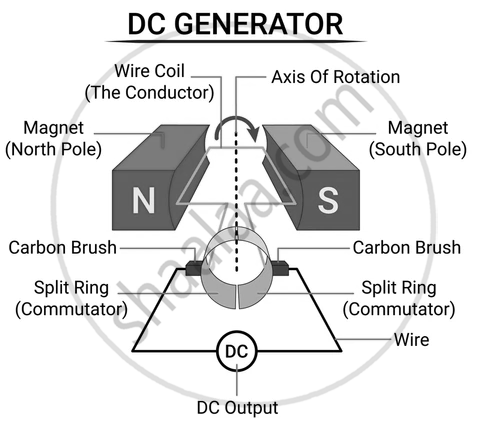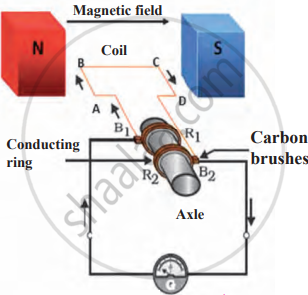Topics
Chemical Substances - Nature and Behaviour (Chemistry)
Chemical Reactions and Equations
- Chemical Equation
- Balancing Chemical Equation
- Types of Chemical Change or Chemical Reaction
- Direct Combination (or Synthesis) Reaction
- Decomposition Reactions
- Single Displacement Reactions
- Double Displacement Reaction
- Oxidation, Reduction and Redox Reactions
- Corrosion of Metals
- Rancidity of Food and Its Prevention
World of Living (Biology)
Acids, Bases and Salts
- Acids
- Bases (Alkalis)
- Indicators
- Properties of Acids
- Properties of Bases (Alkalis)
- Acid or a Base in a Water Solution
- Similarities and Differences Between Acids and Bases
- Strength of Acidic or Basic Solutions
- Salts
- Important Salts in Daily Life
- Preparation and Uses of Sodium Hydroxide
- Preparation and Uses of Bleaching Powder
- Preparation and Uses of Baking Soda
- Preparation and Uses of Washing Soda
- Preparation and Uses of Plaster of Paris
Metals and Non Metals
- Types of Element: Metals
- Physical Properties of Metals
- Chemical Properties of Metal
- Types of Element: Non-metal
- Physical Properties of Non-metal
- Chemical Properties of Non-metal
- Ionic or Electrovalent Bond
- Reactivity Series of Metals
- Extraction of Reactive Metals
- Refining of Metals
- Corrosion of Metals
- The Covalent Bond
- Prevention of Corrosion
Natural Phenomena (Physics)
Carbon and its Compounds
- Carbon: a Versatile Element
- The Covalent Bond
- Saturated and Unsaturated Carbon Compounds
- Allotropy and Allotropes of Carbon
- Crystalline Allotropes of Carbon: Diamond
- Crystalline Allotropes of Carbon: Graphite
- Crystalline Allotropes of Carbon: Fullerene
- Chains, Branches and Rings of Carbon Compound
- Functional Groups in Carbon Compounds
- Homologous Series of Carbon Compound
- Nomenclature of Organic Compounds
- Properties of Carbon
- Ethanol
- Ethanoic Acid
- Soap
- Detergents
- Cleansing Action of Soap
Effects of Current (Physics)
Life Processes
- Living Organisms and Life Processes
- Nutrients and Nutrition
- Mode of Nutrition in Plant
- Autotrophic Plants
- Heterotrophic Plants
- Different Ways of Taking Food
- Human Digestive System
- The Mouth and Buccal Cavity
- The Teeth and Its Structure
- The Salivary Glands
- Swallowing and Peristalsis
- The Food Pipe/Oesophagus
- The Stomach
- The Small Intestine
- Pancreas
- Absorption of Food
- The Large Intestine
- Assimilation of Food
- Liver
- Respiration
- Respiration
- Breathing in Other Animals
- Osmoregulation
- Types of Respiration: Aerobic and Anaerobic Respiration
- Human Respiratory System
- Circulation in Animals
- Blood
- Composition of Blood: Plasma (The Liquid Portion of Blood)
- Composition of Blood: Red Blood Cells (Erythrocytes)
- Composition of Blood: White Blood Cells (Leukocytes)
- Composition of Blood: Blood Platelets (Thrombocytes)
- Blood Circulatory System in Human
- Human Heart
- Blood Vessels
- Circulation of Blood in the Heart (Functioning of Heart)
- Types of Closed Circulation
- Heart Beat - Heart Sounds "LUBB" and "DUP"
- Function of Platelets - Clotting of Blood (Coagulation)
- Lymph and Lymphatic System
- Blood Pressure (B.P.)
- Transport System in Plants
- Water absorbing organ
- Translocation of Water (Ascent of Sap)
- Transport of Mineral Ions
- Transport of Food
- Transpiration
- Excretion
- Human Excretory System
- Function of the Kidney - “Production of Urine”
- Excretion
Natural Resources
Periodic Classification of Elements
- History of Periodic Table: Early Attempts at the Classification of Elements
- Dobereiner’s Triads
- Newland's Law of Octaves
- Mendeleev’s Periodic Table
- Merits and Demerits of Mendeleev’s Periodic Table
- The Modern Periodic Table
- Periodic Properties
- Valency
- Atomic Radius Or Atomic Size
- Metallic and Non-metallic Characters
Control and Co-ordination
- Control and Co-ordination in Human Being
- Human Nervous System
- Neuron (Or Nerve Cell) and Its Types
- Neuron (Or Nerve Cell) and Its Types
- Nerve Fibres
- Major Division of the Nervous System
- Central Nervous System (CNS)
- Peripheral Nervous System (PNS)
- The Human Brain - Forebrain
- The Human Brain - Forebrain
- Reflex and Reflex Action
- Nervous Pathways in Reflexes
- Reflex Arc
- Coordination in Plant: Tropism in Plants
- Chemical Coordination
- Plant Hormones
- Types of Plant Hormones: Auxins
- Types of Plant Hormones: Gibberellins
- Types of Plant Hormones: Ethylene
- Types of Plant Hormones: Cytokinins
- Types of Plant Hormones: Abscisic Acid (ABA)
- Types of Plant Hormones: Ethylene
- Hormones in Animals
- Human Endocrine System
- Pituitary Gland or Hypophysis Gland
- Thyroid Gland
- Parathyroid Gland
- Pancreas (Islets of Langerhans)
- Adrenal Gland (Suprarenal Gland)
- Reproductive Glands (Gonads)
- Thymus Gland
Internal assessment
How do Organisms Reproduce?
- Accumulation of Variation During Reproduction
- Reproduction
- Mode of Reproduction in Plant
- Asexual Reproduction in Plant
- Natural Vegetative Reproduction
- Sexual Reproduction in Flowering Plants
- Sexual Reproduction in Animals
- Human Reproduction
- The Male Reproductive System
- The Female Reproductive System
- Menstrual Cycle (Ovarian Cycle)
- Reproductive Health
- Sexually Transmitted Diseases (STD)
Heredity
- Accumulation of Variation During Reproduction
- Heredity or Inheritance
- Gregor Johann Mendel – Father of Genetics
- Monohybrid Cross
- Gregor Johann Mendel – Father of Genetics
- Mendelian Inheritance - Mendel’s Law of Heredity
- Sex Determination
- Organic Evolution
- Lamarck’s Theory of Evolution
- Darwinism
- Theories of Origin of Life
- Speciation
- Evolution and Classiffication
- Evidences for Biological Evolution
- Paleobotany
- Evolution by Stages
- Human Evolution
Light - Reflection and Refraction
- Reflection of Light
- Law of Reflection of Light
- Mirrors
- Plane Mirror
- Spherical Mirrors
- Rules for the Construction of Image Formed by a Spherical Mirror
- Images Formed by Spherical Mirrors
- Concave Mirror
- Image Formation by Concave Mirror
- Convex Mirror
- Image Formation by Convex Mirror
- Sign Convention
- Mirror Equation/Formula
- Linear Magnification (M) Due to Spherical Mirrors
- Introduction to Refraction of Light
- Refraction of Light Through a Rectangular Glass Slab
- Refractive Index
- Spherical Lens
- Images Formed by Sperical Lenses
- Guideline for Image Formation Due to Refraction Through a Convex and Concave Lens
- Concave Lens
- Images Formed by Concave Lenses
- Convex Lens
- Images Formed by Convex Lenses
- Sign Convention
- Lens Formula
- Magnification Due to Spherical Lenses
- Power of a Lens
The Human Eye and the Colourful World
- Human Eye
- Working of the Human Eye
- Eye Defect and Its Correction: Myopia Or Near-sightedness
- Eye Defect and its Correction: Hypermetropia or Far-sightedness
- Eye Defect and Its Correction: Presbyopia
- Care of the Eyes
- Refraction of Light Through a Prism
- Prism
- Dispersion of Light Through Prism and Formation of Spectrum
- Atmospheric Refraction
- Application of Atmospheric Refraction
- Scattering of Light and Its Types
- Applications of Scattering of Light
Electricity
- Electricity
- Electric Current
- Electric Circuit
- Potential and Potential Difference
- Symbols and Functions of Various Components of an Electric Circuits
- Ohm's Law (V = IR)
- Factors Affecting the Resistance of a Conductor
- Electrical Resistivity and Electrical Conductivity
- Resistors in Series
- Resistors in Parallel
- Effects of Electric Current
- Heating Effect of Electric Current
- Electrical Power
Magnetic Effects of Electric Current
- Magnetic Effect of Electric Current
- Magnetic Field
- Properties of magnetic lines of force
- Magnetic Field Due to a Current Carrying Straight Conductor
- Right-hand Thumb Rule
- Magnetic Field Due to Current in a Loop (Or Circular Coil)
- Magnetic Field Due to a Current Carving Cylindrical Coil (or Solenoid)
- Force on a Current Carrying Conductor in a Magnetic Field
- Electric Motor
- Electromagnetic Induction
- Faraday's Laws of Electromagnetic Induction
- Electric Generator
- Alternating Current (A.C.) Generator
- Direct Current Motor
- Household Electrical Circuits
- Distinction Between an A.C. Generator and D.C. Motor
- Types of Current
Our Environment
Sources of Energy
- Source of Energy
- Conventional energy resources or non-renewable energy resources
- Fossil Fuels
- Heat Energy (Thermal Energy)
- Hydroelectric Energy
- Bio-energy
- Wind Energy
- Solar Energy
- Solar Energy Devices
- Energy from the Sea
- Geothermal Energy
- Nuclear Energy
- Nuclear Fission
- Forms of Energy
- Environmental Consequences
- How Long Will an Energy Source Last Us?
Sustainable Management of Natural Resources
- Sustainability of Natural Resources
- Case Study: Ganga Pollution and Ganga Action Plan
- Solid Waste Management
- Five R’s of Waste Management
- Protecting our environment
- Forests: Our Lifeline
- Stakeholders of Forest
- Conservation of Forest
- Conservation of Wildlife
- Water Management (Conservation of Water)
- Fresh Water Management
- Non-crystalline/Amorphous Forms: Coal
- Petroleum
- Conservation of Coal, Petroleum, and Natural Resources
- Overview of Natural Resource Management
- Introduction
- Types of Electric Generator
- Components of an Electric Generator
- Working of an AC Generator
- AC Generator vs. DC Generator
- Application of an Electric Generator
Introduction:
An electric generator (also known as a dynamo) is a device that converts mechanical energy into electrical energy using the principle of electromagnetic induction. The mechanical energy required to operate the generator is provided by sources such as steam turbines, gas turbines, and wind turbines. Generators supply most of the electricity required for power grids.
History of Electric Generators:
Before the discovery of the relationship between electricity and magnetism, electrostatic generators were used. However, they were inefficient due to
- Difficulty in insulating high-voltage machines
- Low power output
To overcome this, Michael Faraday invented the first electromagnetic generator, called the Faraday Disc, in 1831.
Working of a Generator: Generators do not create electricity. Instead, they use mechanical energy to move electric charges present in their wire windings, generating an electric current.
Principle of Operation:
Modern generators work based on Faraday’s Law of Electromagnetic Induction, which states:
"A current is induced in a conductor when it moves through a magnetic field, causing a voltage difference and the flow of electric charges."
Types of Electric Generator
Electric generators are classified based on the type of current they produce:
1. AC Generators (Alternating Current Generators)
- It is also known as alternators.
- Converts mechanical energy into alternating current (AC).
- Used in power plants for large-scale electricity generation.
- It can be single-phase (for household use) or three-phase (for industries and transmission).
- And works with slip rings to produce a continuously alternating current.

2. DC Generators (Direct Current Generators)
- It converts mechanical energy into direct current (DC).
- Unlike AC generators, DC generators use a split-ring commutator to maintain a one-directional current flow.
- It is commonly used in battery charging, electroplating, and traction systems.

Classified into three types:
- Shunt Generators: Used in battery charging applications.
- Series Generators: Commonly used in street lighting.
- Compound-Wound Generators: Found in industrial equipment for stable power supply.
Components of an Electric Generator
1. Basic Electric Generator (Conceptual, as shown in textbooks)
- Coil (ABCD): Conducts electricity and rotates in the magnetic field.
- Magnetic Field: Provided by a permanent magnet or electromagnet.
- Slip Rings (or Split Rings for DC Generators): Transfer current while rotating.
- Carbon Brushes: Maintain electrical contact with rings.
- Axle: Rotates the coil.
- External Circuit (Galvanometer, Load): Detects or uses the generated electricity.
2. Fuel-Based Electric Generator (Practical, Large-Scale)
- Frame: Structural support.
- Engine: Converts fuel energy into mechanical energy.
- Alternator: Converts mechanical rotation into electricity.
- Fuel System: Supplies petrol, diesel, or gas for operation.
- Voltage Regulator: Maintains stable output voltage.
- Cooling System: Prevents overheating.
- Lubrication System: Ensures smooth operation of moving parts.
- Exhaust System: Removes combustion waste gases.
- Battery Charger: Keeps the starter battery charged.
- Control Panel: Manages generator operations.
Working of an AC Generator
1. A coil ABCD is placed between the north (N) and south (S) poles of a magnet.
2. The ends of the coil are connected to conducting rings (R1 and R2) via carbon brushes (B1 and B2).
3. The axle attached to the coil is rotated mechanically (e.g., using a turbine).
4. As the coil rotates, the branches AB move up and CD moves down (clockwise motion).
5. According to Fleming’s Right-Hand Rule, an induced current is generated:
- First half rotation: Current flows from A → B → C → D in the coil.
- In the external circuit, current flows from B2 to B1 through the galvanometer.
6. After half a rotation, the coil switches position:
- AB and CD interchange places, reversing the direction of the induced current.
- The new current flows as D → C → B → A in the coil.
- In the external circuit, current now flows from B1 to B2.
7. This continuous reversal of current direction produces Alternating Current (AC).

Electric generator
Conversion of an AC Generator into a DC Generator:
- In an AC generator, the current reverses every half cycle.
- To produce Direct Current (DC) (which flows in only one direction), the conducting rings (R1, R2) are replaced with a split-ring commutator.
- The split ring ensures that the coil side moving upwards is always connected to one brush and the side moving downwards is connected to the other brush.
- This keeps the current in the same direction in the external circuit, producing DC output.
AC Generator vs. DC Generator
| Feature | AC Generator | DC Generator |
| Current Type | Produces Alternating Current (AC) | Produces Direct Current (DC) |
| Ring Type | Uses two conducting rings (slip rings) | Uses a split-ring commutator |
| Current Direction | Reverses direction after every half cycle | Flows in one direction |
| Usage | Power plants, household electricity supply | Batteries, charging devices, electroplating |
Application of an Electric Generator
- Main power source for cities and power grids.
- Backup power for homes, businesses, and hospitals.
- It is used on construction sites where power is not yet installed.
- Energy-efficient, reducing fuel consumption.
- It is used in laboratories for experiments requiring specific voltage outputs.
- Drives motors in industries.
- And used in transportation, including trains and ships.


